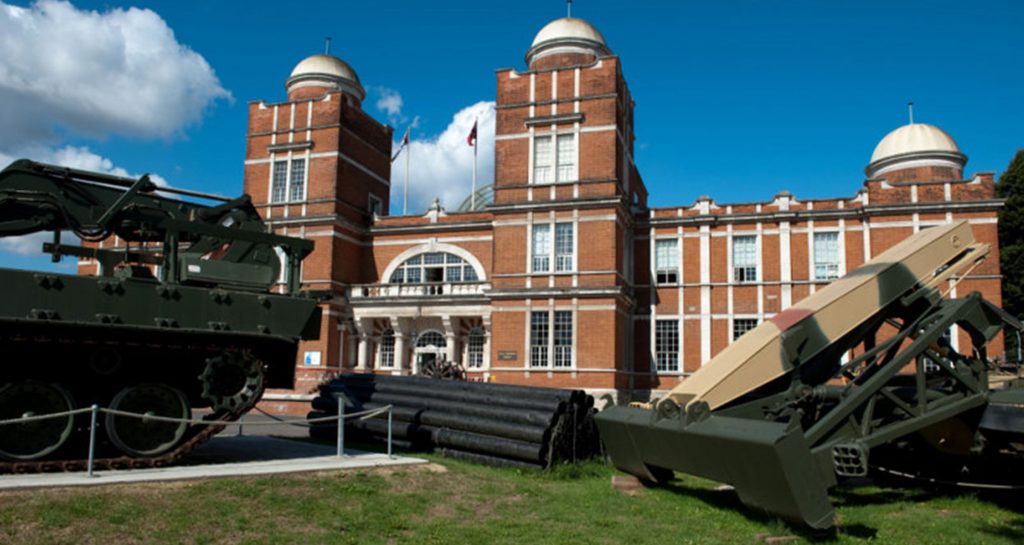Three sections of the Berlin Wall made of reinforced concrete from the area of the Staaken checkpoint.
These three sections of the wall are one of the largest sections of the wall outside of Berlin. They were brought back to Chatham, Kent by 38 Field Squadron November to be put on display in the Museum. The museum displays objects representing the breadth and wide ranging activities of the Kent-based regiment.

The wall symbolised the difference between the western democrats and the eastern communists and the way they thought Germany should be led. It also symbolised the inner conflict of Germany and the division between ‘free’ or democratic.
Dismantled by 38 (Berlin) Field Squadron November 1990. The wall completely cut off (by land) West Berlin from surrounding East Germany and from East Berlin until it was opened in November 1989. Its demolition officially began on 13 June 1990 and was completed in 1992. The barrier included guard towers placed along large concrete walls, which circumscribed a wide area (later known as the “death strip”) that contained anti-vehicle trenches, “fakir beds” and other defences. The Eastern Block claimed that the wall was erected to protect its population from fascist elements conspiring to prevent the “will of the people” in building a socialist state in East Germany. In practice, the Wall served to prevent the massive emigration and defection that had marked East Germany and the communist Eastern Bloc during the post-World War II period.
The Berlin Wall was officially referred to as the “Anti-Fascist Protective Wall” (German: Antifaschistischer Schutzwall) by GDR authorities, implying that the NATO countries and West Germany in particular were “fascists” by GDR propaganda. Along with the separate and much longer Inner German border (IGB), which demarcated the border between East and West Germany, it came to symbolize the “Iron Curtain” that separated Western Europe and the Eastern Bloc during the Cold War.
Before the Wall’s erection, 3.5 million East Germans circumvented Eastern Bloc emigration restrictions and defected from the GDR, many by crossing over the border from East Berlin into West Berlin; from which they could then travel to West Germany and other Western European countries. Between 1961 and 1989, the wall prevented almost all such emigration. During this period, around 5,000 people attempted to escape over the wall, with an estimated death toll ranging from 136 to more than 200 in and around Berlin. The fall of the Berlin Wall paved the way for German reunification, which was formally concluded on 3 October 1990. The part of the Berlin Wall on display in the museum is one of the largest sections of the wall outside of Berlin.
Curriculum Links:
You can jot down some notes for your future references using the form below. Fill in the details about the object and any notes you deem important. You can save and print this too.